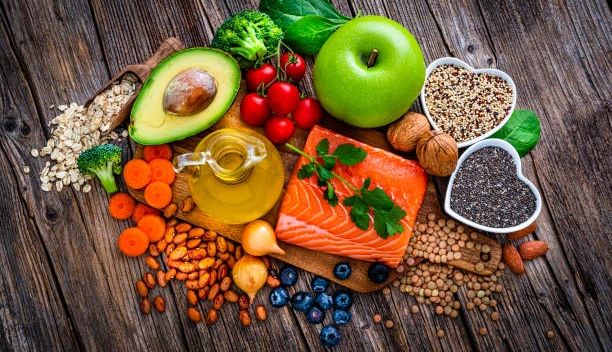AARP Hearing Center


Nearly half of all adults — about 48 percent — have high blood pressure, defined as anything greater than 130/80 mm Hg, according to the Centers for Disease Control and Prevention (CDC). That share rises with age, to about 70 percent of adults 65 and older. But one of the most straightforward ways to help get your blood pressure under control is to watch what you put on your plate, advises Luke Laffin, M.D., codirector of the Center for Blood Pressure Disorders at the Cleveland Clinic.
One option to is to adopt the DASH (Dietary Approaches to Stop Hypertension) diet, which is rich in fruits, veggies, lean meats, nuts, seeds, whole grains and low-fat dairy. A review of 30 randomized, controlled trials published in 2020 in the journal Advances in Nutrition concluded that people who adopted the DASH diet saw significant reductions in their blood pressure, even if they didn’t have high blood pressure, compared with control groups. Earlier research found that following the low-sodium DASH diet reduced blood pressure by about 11 points in those with high blood pressure. “It’s equivalent to taking one or two blood pressure medications,” Laffin points out.
And a little salt reduction goes a long way. One recent study found that cutting just a teaspoon of salt over a week lowered blood pressure by around 6 mm Hg, about the reduction many people see when they take a common high blood pressure medication.
To get control of blood pressure, it’s best to concentrate on an overall healthy diet, rather than focus on one food in particular. “All these nutrients work synergistically together,” explains Maya Vadiveloo, associate professor of nutrition and food sciences at the University of Rhode Island and chair-elect of the nutrition committee at the American Heart Association. “Foods like fruits, vegetables and low-fat dairy are rich in micronutrients that work together to regulate blood pressure.” They also replace more harmful foods that can elevate blood pressure, like salty snacks.
But some specific foods are good to include in your diet because they are rich in nutrients that help lower blood pressure. Here are the top foods to eat — and those to avoid.
9 great foods for controlling high blood pressure
1. Bananas
These are rich in potassium, a nutrient shown to help lower blood pressure, says Laffin. One medium banana provides about 375 milligrams of potassium, contributing 11 percent of the recommended daily intake for a man and 16 percent for a woman. The only caveat is if you have late-stage kidney disease, notes Laffin; you’ll need to be careful with potassium consumption so check with your doctor before loading up on bananas.
2. Blueberries
These contain resveratrol, a substance that helps relax blood vessels, says Nieca Goldberg, M.D., a cardiologist and medical director for Atria New York City and host of the Beyond the Heart podcast. They’re also rich in anthocyanins, a group of plant pigments that promote heart health. A study published in 2019 in The Journals of Gerontology found that people who drank a wild blueberry beverage daily for 28 days saw a 5 mm Hg drop in blood pressure. An added bonus: Blueberries seem to be especially good for the brain, according to research from Rush University.
3. Spices
If you have high blood pressure, your doctor will tell you to avoid the saltshaker. Season your food with spices instead. A study published in 2021 in The American Journal of Clinical Nutrition found that seasoning foods with 6.6 grams of herbs and spices a day was linked with lower blood pressure after just four weeks. The study looked at a blend of 24 herbs and spices, including basil, thyme, cinnamon and turmeric. “What was interesting is that we didn’t even decrease sodium at all — the herbs and spices decreased blood pressure independently,” says study coauthor Penny Kris-Etherton, Evan Pugh University Professor of Nutritional Sciences at Penn State University.
4. Dark chocolate
It’s rich in the flavonoid cacao, an antioxidant that dilates blood vessels and thus lowers blood pressure, points out Kris-Etherton. Look for a bar that contains 70 to 85 percent cacao, according to the American Heart Association, since that indicates it’s richer in flavonoids. A review of 35 clinical trials published in 2017 in the Cochrane Library found that regular consumption of cocoa lowered blood pressure by about 4 points in people who already had high blood pressure. “You just need to be careful, because if you eat too much, you’ll gain weight,” says Kris-Etherton. And excess weight is associated with higher blood pressure.































































More on Healthy Eating
Can Tart Cherry Juice Help Lower Blood Pressure?
A look at the science behind the health claims for this tasty beverageFoods You Can Eat Without Gaining Weight
These healthy options are light on calories and fat, plus they fill you up
7 Superfoods to Eat After 50
These standouts — plus a few ‘boosters’ — can keep you healthy as nutritional needs change with age
Try These Tips for Living a Healthier Life
Small changes can add up to big mental and physical results
Recommended for You